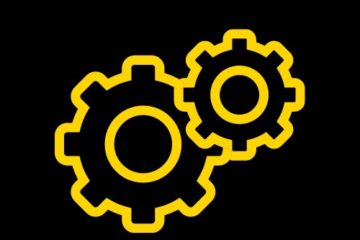Below is an article from Addy Adewusi’s Principles of Automation project.
Hello Automation Enthusiasts!
Today, I will be answering the question, what is software-enabled automation? I will also provide examples of types of software-enabled automation and identify their business use cases.
First, A Definition Of Automation
First, what the heck is automation? Automation has become one of those buzz words that people use to sound smart and innovative, but they may not know exactly what it means. In addition, the media sometimes presents automation as a new technology, which could not be further from the truth. Let’s establish a base definition of automation to help demystify the concept. Below is Merriam-Webster’s definition of automation:
1. the technique of making an apparatus, a process, or a system operate automatically
2. the state of being operated automatically
3. automatically controlled operation of an apparatus, process, or system by mechanical or electronic devices that take the place of human labor
(2021, August 28). Automation. Definition of Automation by Merriam-Webster. http://www.merriam-webster.com/dictionary/automation
I believe those are adequate definitions, but since I like to use plain English, I think of automation, as “set it and forget it.” Sure some human involvement will be needed at some point, but largely, automation allows some process, task, activity, or object to run by itself.
The Nuances of Automation
Automation sounds like magic doesn’t it? But it is definitely not. Automation is not smart, it is only as smart as the human that sets up, or programs, the automation.
Imagine the basic, everyday example of an alarm clock. Let’s say I want to wake up at 6:00am. Sounds easy enough, right? I program the alarm clock for 6:00 am and the alarm clock will make a loud noise at 6:00 am. But what if I am using a twelve-hour clock and I accidentally set it for 6:00 pm? I can yell at the alarm for not waking me up in time, but the alarm clock did it’s job, which was to make a loud noise at the programmed time.
Let’s say I do set the alarm correctly for 6:00 am. The greater purpose of me setting the alarm at 6:00 am is so that I can make my 7:00 am appointment. The alarm may ring loudly, but it has no control over me getting out of bed. I could sleep through the loud noise, or I could hit the snooze button for two hours straight, causing me to miss the appointment.
Automation is not smart, it is only as smart as the human that sets up, or programs, the automation.
Addy Adewusi
In this simple example of an alarm clock, important realities of automation emerge:
- Automation requires human inputs, and sometimes requires human monitoring and human actions.
- Automation is only as smart as the human programming the automation.
- Automation does not guarantee the achievement of your goal.
- Automation is only a tool. A powerful one, but still, just a tool.
Software-Enabled Automation
When I use the phrase “software-enabled automation,” I am specifically referring to automation that is enabled by software applications. There are countless different software-enabled automation tools. I bundled them into a few categories and provided some examples:
- Productivity
- Scheduling tools
- Calendar reminders
- Email inbox rules
- Content blockers
- Sales Operations
- Customer relationship management software (CRM)
- Chatbots
- Autodialers
- Marketing Operations
- Marketing automation software
- SMS
- Events
- Social
- What You See Is What You Get (WYSIWYG) editors
- Websites
- Landing pages
- Online auction-based advertising platforms
- Search
- Social
- Ecommerce
- Marketing automation software
- Engineering
- API-enabled integration platforms
- “No-code” application-building software
- Accounting, HR, and Legal
- Invoicing and billing software
- Contract generating software
- Applicant tracking software
- Business Intelligence
- Data visualization software
This is by no means an exhaustive list, but hopefully you have had a hands-on experience of at least one of these examples. If you have submitted a job application online, you will understand the concept of data inputs, a foundational Principle of Automation that I will discuss in the next drop: Principle One: Data.
Stay tuned by following Principles of Automation on Callin, Twitter, Instagram or my professional website, linked in all of my bios.
